





One missing signature. One outdated form. One incorrect document.
That’s all it takes to land your organization in hot water with federal regulators. And the fines aren’t cheap. I-9 paperwork violations can cost up to $2,861 per form, and hiring unauthorized workers? That can soar to $28,619 per violation. Don’t leave I-9 compliance to chance. Data Facts’ I-9 and E-Verify solution helps you mitigate costly errors. It automates manual tasks, keeps your documents organized, and allows you to breeze through audits with confidence...because you deserve a better experience


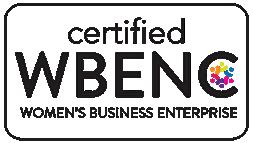








The HR Conference CruiseSM to Alaska is designed to deliver accredited learning, strategic insights, and meaningful HR connections.
Take the opportunity to deepen your expertise, earn recertification credits, and engage with peers—all aboard Royal Caribbean’s Voyager of the Seas.
MAY 15-22, 2026
• Recertification credits
• Unmatched networking at sea
• 7 days of exploration
Juneau, Alaska
Discover fresh perspectives amid majestic mountains and glacial waters.
Skagway, Alaska
Take your leadership to new heights where gold rush history meets frontier spirit.
Endicott Arm & Dawes Glacier, Alaska
Reflect and recharge while witnessing nature's most powerful forces in action.
Victoria, British Columbia
Wrap up your voyage surrounded by timeless charm and forward-thinking dialogue.



69% of employees say they would work harder if their efforts were better recognized.

Did You Know Just ONE I-9 Slip

Editor Cynthia Y. Thompson, MBA, SHRM-SCP, SPHR
Publisher
The Thompson HR Firm, LLC
Art Direction Park Avenue Design
Marketing and Social Media Specialist
Julie Nagem
Project Specialist
Liz Rogers
Photographer
Charles B. Thompson
Webmaster
Leo Dimilo
Contributing
William Brown
Jenny Dearborn
Amy Schabacker Dufrane
Trish Holliday
Tim D. Keck
Lucinda Kenning
of experienced with extensive ederal agencies
mitted to utilizing exper tise to help e and access the programs that are e to them
Kelly Rider
Stacey Stewart
James V. Thompson
Nakato G. Wood
Contact HR Professionals Magazine:
FEDlogic provides exper t guidance across all federal and state benefits, extending beyond Medicare navigation offering suppor t for over 1,000 state and federal programs

To submit a letter to the editor, suggest an idea for an article, notify us of a special event, promotion, announcement, new product or service, or obtain information on becoming a contributor, visit our website at www.hrprofessionalsmagazine.com. We do not accept unsolicited manuscripts or articles. All manuscripts and photos must be submitted by email to Cynthia@hrprosmagazine.com. Editorial content does not necessarily reflect the opinions of the publisher, nor can the publisher be held responsible for errors.
Exper t consultations are unlimited, confidential, and free for employees and their household members
HR Professionals Magazine is published every month, 12 times a year by the Thompson HR Firm, LLC. Reproduction of any photographs, articles, artwork or copy prepared by the magazine or the contributors is strictly prohibited without prior written permission of the Publisher. All information is deemed to be reliable, but not guaranteed to be accurate, and subject to change without notice. HR Professionals Magazine, its contributors or advertisers within are not responsible for misinformation, misprints, omissions or typographical errors.
posal@fedlogicgroup com
w.fedlogicgroup.com
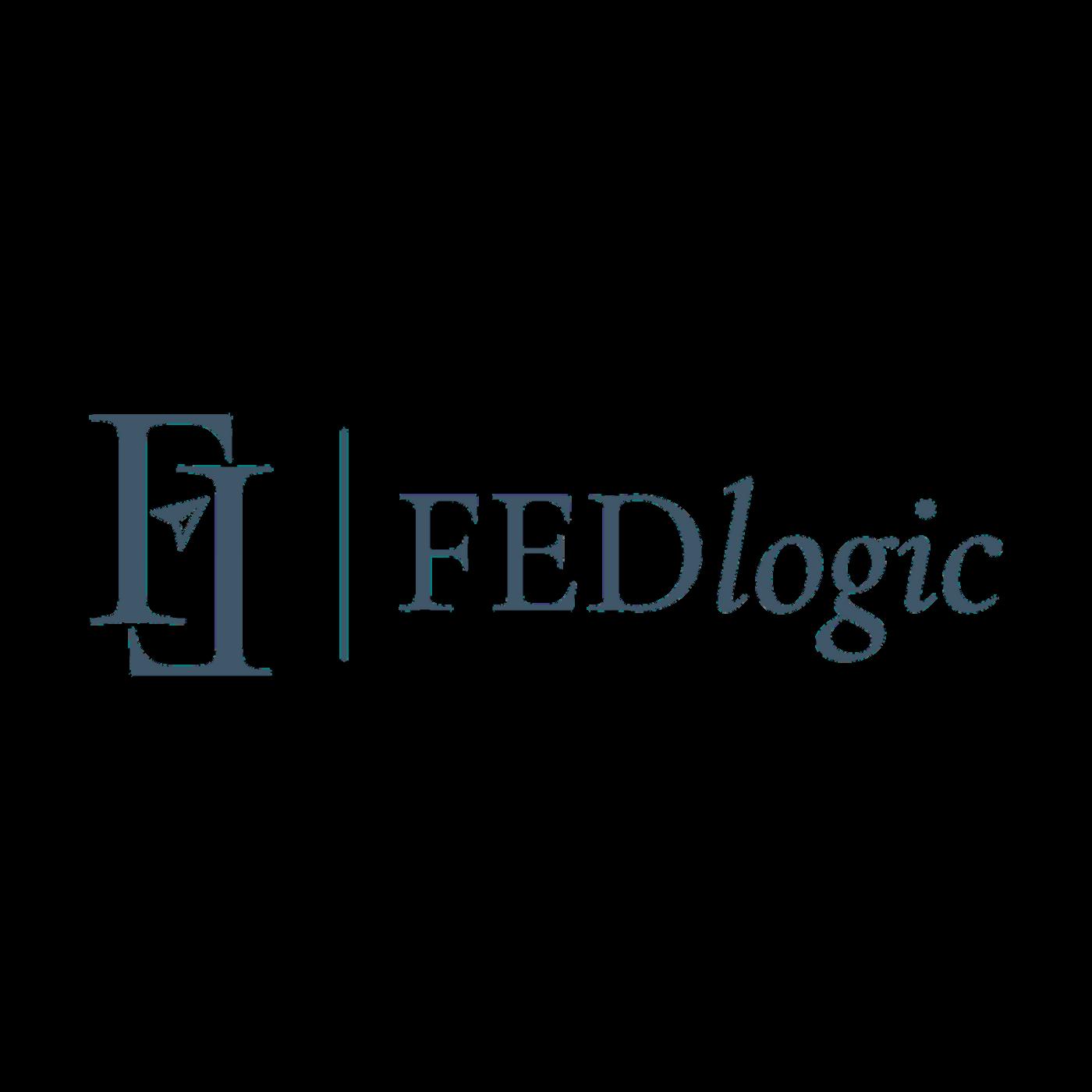
ood for employees, good for you.
©2025 The Thompson HR Firm, LLC This publication is pledged to the spirit and letter of Equal Opportunity Law. The following is general educational information only. It is not legal advice. You need to consult with legal counsel regarding all employment law matters. This information is subject to change without notice.
































An independent actuarial analysis provides our conservative savings basis for transitioning off a group health plan, excluding factors like medication conditions, age, and catastrophic claims costs that significantly drive high claims Employers typically have 2 4x greater initial claims savings than estimated

As we delve deeper into the evolving landscape of Human Resources, it’s clear that innovation and expertise are paving the way for transformative change. This month, we’re thrilled to highlight visionary leaders and groundbreaking initiatives designed to empower HR professionals. From new educational opportunities to exclusive networking experiences, this issue is brimming with insights that aim to inspire and elevate your HR journey.
We are excited to introduce you to Dr. Trish Holliday, SHRM-SCP, and Lucinda Kenning, MBA, aka, Holliday | Kenning. Dr. Trish “Doc” Holliday is an educator, international keynote speaker, and award-winning HR executive known for her contagious energy, strategic mind, and ability to make even compliance training sound exciting (no small feat). With a doctorate in education and a passion for leadership development, she has dedicated her career to helping individuals step confidently into their potential and organizations build cultures that stick.
Lucinda Kenning, MBA, brings a different but equally powerful background. With years of hands-on leadership at the State of Oklahoma, including directing its Human Capital Management division during major government consolidation, Lucinda knows what it means to lead in the face of complexity—and how to make strategy stick when the stakes are high. Check out their profile on Page 6 to learn more about their services with strategy.
Our July issue features top educational programs for HR professionals. Among them are two exciting HR Conference Cruises where you can earn up to 16 SHRM PDCs and HRCI business credits. There are 3 exciting sailings departing from Port Canaveral, Florida, in March and April 2026. Check out the details on Page 8. But wait! There’s more – check out the NEW HR Conference Cruise to Alaska setting sail May 15-22, 2026! Check Page 3 for details. Go to HRCruise. com to learn more.
Want to become an AI Expert in HR? Check out SHRM’s new AI + HR Specialty Credential on Page 9. This credential is designed specifically for HR trailblazers to harness the power of artificial intelligence (AI) and amplify it with human ingenuity (HI) for enhanced organizational growth. Check out the benefits of SHRM Certification on Page 19. Take a look at these excellent programs and find the one that suits your needs. Visit SHRM.org for in-person and virtual education programs available.
HRCI is introducing a new certificate called the HRCI Pro Certificate that includes People Analytics, Benefits, Talent Acquisition, and Workplace Wellness. This certificate is a collection of certificate courses that focus on advanced HR and business concepts. HRCI’s full catalogue also includes eight global certifications. Check out HRCI Engage to join the global HR online community at hrci.org/engage.
Are you unsure about DEI’s relevance in the workplace under the Trump administration? Should you update your policy or discontinue DEI? Find the answers on Page 28 with Rainey Kizer’s excellent explanation. Special thanks to Nakota Wood and James Thompson for their insightful article.
If you are not currently certified as an HR professional, I invite you to attend our upcoming Online HRCI | PHR | SPHR Certification Exam Prep Class beginning August 21. We will meet on Monday and Wednesday evenings from 6 PM CT to 7 PM CT. According to recent statistics, certified HR professionals earn up to 20% more than non-certified HR professionals! Our class is guaranteed so that if you do not pass your exam the first time, you may take the next class at no charge. I will stay with you until you pass! Our class has a 90% pass rate. You can register on our website at www.hrprofessionalsmagazine.com. The deadline to register is August 15. See details on our website or email me at cynthia@hrprosmagazine.com
Watch your email for your invitation to our July complimentary webinar sponsored by Data Facts. This webinar is pre-approved for one HRCI business credit and one SHRM PDC. If you are not currently receiving our monthly email invitation, you can subscribe on our website at www. hrprofessionalsmagazine.com.

cynthia@hrprosmagazine.com

Holliday | Kenning was born the way all great consulting firms should be—scribbled out on a napkin over dinner at a professional conference. Trish Holliday and Lucinda Kenning, longtime colleagues and friends, had both taken the stage as speakers and, over grilled chicken and iced tea, began asking: “What’s next?” The answer came quickly and clearly—consulting. What followed was an animated exchange, a flurry of notes on that now-legendary (and now-missing) napkin, and the blueprint for what would become a dynamic, values-driven consulting firm that helps organizations and leaders thrive.
While the napkin may be gone, the vision it captured lives on in every engagement, training, and strategic session delivered by Holliday | Kenning.
Dr. Trish “Doc” Holliday is an educator, international keynote speaker, and award-winning HR executive known for her contagious energy, strategic mind, and ability to make even compliance training sound exciting (no small feat). With a doctorate in education and a passion for leadership development, she has dedicated her career to helping individuals step confidently into their potential and organizations build cultures that stick.
Trish served as the State of Tennessee’s first Chief Learning Officer. There, she designed LEAD Tennessee, a transformative leadership development program that’s still going strong.
As a founding partner of Holliday | Kenning, Trish brings a strategic lens, systems-thinking, and executive coaching expertise to clients in both public and private sectors. She’s known for rallying teams, driving performance, and always leaving a whiteboard completely full.
Lucinda Kenning, MBA, brings a different but equally powerful background. With years of hands-on leadership at the State of Oklahoma, including directing its Human Capital Management division during major government consolidation, Lucinda knows what it means to lead in the face of complexity—and how to make strategy stick when the stakes are high.
Lucinda began her career with Wal-Mart as a Loss Prevention District Manager, helping open stores in brand new markets with the company’s famous “do the difficult today, the impossible tomorrow” spirit. That same spirit now guides her work as a sought-after speaker, consultant, and adjunct professor.
She co-founded Holliday | Kenning with Trish to bring evidencebased, results-oriented consulting to organizations ready to embrace change, grow leadership, and prepare for tomorrow. Lucinda specializes in strategic decision-making, organizational transition, and succession readiness—with a side of practical optimism and dry wit.
What We Do: Services with Strategy (and a Little Spark)
At Holliday | Kenning, we don’t believe in cookie-cutter solutions or generic PowerPoint decks. We bring customized, actionable strategies grounded in real-world experience— and we make them stick with our LPL model: Learn It. Practice It. Launch It.
Here’s how we help organizations grow, lead, and thrive:
�� Play One: Strategic Planning – Culture of Readiness
We co-create a clear, actionable roadmap to help you achieve your goals with intention and impact. Whether you’re navigating a big shift or planning a new direction, we’ll get you there with a strategic plan that actually gets used (not shelved).
�� Play Two: Succession Readiness – Culture of Talent Sustainability
No more wondering who’s next. We build deep leadership pipelines with a “grow your own” approach—developing everyone from high-potential emerging leaders to C-suite successors.
�� Play Three: Leadership Development – Culture of Growth
Using our unique tools, we strengthen your talent bench. Whether through workshops, coaching, or custom programs, we equip leaders to lead boldly and effectively—today and into the future.
�� Play Four: Organizational Accountability – Culture of Achievement
Our secret sauce? The 4 Cs: Clear Goals + Continuous Benchmarking + Courageous Feedback = Culture of Achievement. We help teams move from vague intentions to measurable performance.
�� Play Five: Change Navigation – Culture of Agility
Change happens. We help you lead through it with clarity, calm, and confidence—aligning culture, people, and process so you’re not just reacting but evolving.
We are not your average consultants. Between us, we’ve transformed state governments, partnered with utilities, finance, engineering, and healthcare organizations, supported mission-driven nonprofits, built scalable leadership programs, navigated large-scale reorganizations, opened new markets, and taught thousands of professionals how to lead and manage change with confidence.Our clients choose us because we bring:
· Real experience from the trenches
· Evidence-based models that actually work
· Tailored approaches to each organization’s needs
· Energy and humor (because yes, HR can be fun)
We’re committed to helping leaders at all levels show up as their best selves and helping organizations create cultures where people want to stay, grow, and lead.
Whether you’re navigating organizational change, planning for the future, or developing your next generation of leaders, Holliday | Kenning is here to help you get clear, get ready, and get moving.
We bring a strong handshake, a sharper strategy, and maybe even a new napkin—just in case lightning strikes again.

September 7-10
Latest Employment Law Updates
Stay compliant and informed with crucial legal insights.
Talent Management & Employee Engagement
Learn best practices for attracting, retaining, and motivating top talent.
Risk Management
Minimize organizational risks and navigate challenges with confidence.
Employee Benefits & Total Rewards
Optimize compensation strategies and benefits packages for a competitive edge.
Networking & Fun in Music City
Engage in meaningful conversations, forge new connections, and enjoy all that Nashville has to offer!
Music City Center, Nashville, TN
Whether you're a seasoned HR leader or just beginning your journey, this conference will provide the knowledge, tools, and relationships you need to thrive. Register Now & Be Part of the Future of HR!
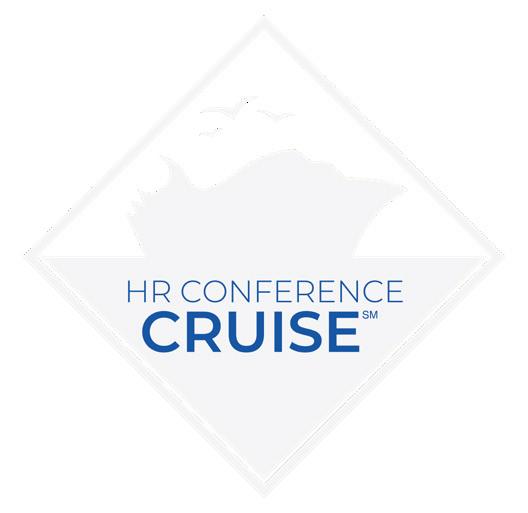

Join us for one of THREE exciting sailings departing from Port Canaveral, Florida.
Use Code HRProMag25 for $100 discount on full conference registration!

March 7-12, 2026
Puerta Costa Maya & Cozumel, Mexico

March 16-21, 2026
Perfect Day at Coco Cay, Bahamas Labadee, Haiti
Elevate your HR expertise on board a sailing designed for professional growth and connection.
Earn recertification credits, sharpen your skills with leading voices in HR, and build your professional network — all in one experience.

April 13-18, 2026
Perfect Day at Coco Cay, Bahamas Labadee, Haiti
Register today and choose your next adventure!



Use Code HRProMag25 for $100 discount on full conference registration!
o f e m p l o y e e s s a y t h e y
w o u l d w o r k h a r d e r i f t h e y
f e l t t h e i r e f f o r t s w e r e




In these uncertain times, show your team you truly care. Start by asking what keeps them up at night. Then actaddress one of their top concerns with employee benefits designed to give them peace of mind.
In these uncertain times, show your team you truly care. Start by asking what keeps them up at night. Then actaddress one of their top concerns with employee benefits designed to give them peace of mind. As a fellow business owner, I've been there. Let me help - because your people deserve to feel protected now more than ever.
In these uncertain times, show your Start by asking what keeps them up address one of their top concerns with designed to give them peace of mind. owner, I've been there. Let me help deserve to feel protected now more
In these uncertain times, show your Start by asking what keeps them up address one of their top concerns with designed to give them peace of mind. owner, I've been there. Let me help people deserve to feel protected now
In these uncertain times, show your team you truly care. Start by asking what keeps them up at night. Then actaddress one of their top concerns with employee benefits designed to give them peace of mind. As a fellow business owner, I've been there. Let me help - because your people deserve to feel protected now more than ever
In these uncertain times, show your team you truly care. Start by asking what keeps them up at night. Then actaddress one of their top concerns with employee benefits designed to give them peace of mind. As a fellow business owner, I've been there. Let me help - because your people deserve to feel protected now more than ever
In these uncertain times, show your team you truly care. Start by asking what keeps them up at night. Then actaddress one of their top concerns with employee benefits designed to give them
In these uncertain times, show your team you truly care. Start by asking what keeps them up at night. Then actaddress one of their top concerns with employee benefits designed to give them peace of mind. As a fellow business owner, I've been there. Let me help - because your people deserve to feel protected now more than ever

In these uncertain times, show your team you truly care. Start by asking what keeps them up at night. Then actaddress one of their top concerns with employee benefits designed to give them peace of mind. As a fellow business owner, I've been there. Let me help - because your people deserve to feel protected now more than ever
Start by asking what keeps them up at
In these uncertain times, show your team you truly care. Start by asking what keeps them up at night. Then actaddress one of their top concerns with employee benefits designed to give them peace of mind. As a fellow business owner, I've been there. Let me help - because your people deserve to feel protected now more than ever
In these uncertain times, show your team
In these uncertain times, show your team you truly Start by asking what keeps them up at night. Then address one of their top concerns with employee designed to give them peace of mind. As a fellow owner, I've been there. Let me help - because your people deserve to feel protected now more than In these
2025 State of the Market Survey:
In these uncertain times, show your team you truly care. Start by asking what keeps them up at night. Then actaddress one of their top concerns with employee benefits designed to give them peace of mind. As a fellow business owner, I've been
Zywave’s 2025 State of the Market Survey gathered insights from over 1,000 U.S. employers 92% of whom were small and midsize businesses to understand how market conditions are impacting business performance and outlook.
address one of their top concerns with employee designed to give them peace of mind. As a fellow owner, I've been there. Let me help - because deserve to feel protected now more than ever
Zywave’s 2025 State of the Market Survey gathered insights from over 1,000 employers 92% of whom were small and midsize businesses to understand market conditions are impacting business performance and outlook.
State of the Market Survey:
Zywave’s 2025 State of the Market Survey gathered insights from over 1,000 U.S. employers 92% of whom were small and midsize businesses to understand how market conditions are impacting business performance and outlook.
Zywave’s 2025 State of the Market Survey gathered insights from over 1,000 U.S. employers 92% of whom were small and midsize businesses to understand how market conditions are impacting business performance and outlook.
Zywave’s 2025 State of the Market Survey gathered insights from over 1,000 U.S. employers 92% of whom were small and midsize businesses to understand how market conditions are impacting business performance and outlook.
Nearly half of employers report a negative impact from current market conditions, and over 30% expect it to get worse. Current Impact on Business Performance Outlook for the Rest of 2025
Zywave’s 2025 State of the Market Survey gathered insights from over 1,000 U.S. employers 92% of whom were small and midsize businesses to understand how market conditions are impacting business performance and outlook.
Zywave’s 2025 State of the Market Survey gathered insights from over 1,000 U.S. employers 92% of whom were small and midsize businesses to understand how market conditions are impacting business performance and outlook.
Nearly half of employers report a negative impact from current market conditions, and over 30% expect it to get worse. Current Impact
Nearly half of employers report a negative impact from current market conditions, and over 30% expect it to get worse.
Nearly half of employers report a negative impact from current market conditions, and over 30% expect it to get worse.
Nearly half of employers report a negative impact from current market conditions, and over 30% expect it to get worse.
Current Impact on Business Performance
Outlook for the Rest of 2025
Current Impact on Business Performance Outlook for the Rest of 2025
Nearly half of employers report a negative impact from current market conditions, and over 30% expect it to get worse.
Current Impact on Business Performance Outlook for the Rest of 2025
Nearly half of employers report a negative impact from current market conditions, and over 30% expect it to get worse.
Tariffs and trade policy
Tariffs and trade policy
Tariffs and trade policy
Concerns over rising costs and disrupted supply chains are attributed to new tariffs. Inflation and recession fears Ongoing inflation and reduced consumer spending are fueling recession worries. Rising health care costs A 7%-8% increase is projected in employersponsored health plans in 2025. Layoffs Workforce reductions continue across industries, especially those tied to government funding. Talent shortages There is a worsening shortage of qualified workers, particularly in sectors reliant on foreign
and
Concerns over rising costs and disrupted supply chains are attributed to new tariffs. Inflation and recession fears Ongoing inflation and reduced consumer spending are fueling recession worries.
Rising health care costs
Concerns over rising costs and disrupted supply chains are attributed to new tariffs.
Tariffs and trade policy
Inflation and recession fears
Rising health care costs
Inflation and recession fears
Layoffs
Rising health care costs
Tariffs and trade policy
Concerns over rising costs and disrupted supply chains are attributed to new tariffs.
Concerns over rising costs and disrupted supply chains are attributed to new tariffs.
Ongoing inflation and reduced consumer spending are fueling recession worries.
Inflation and recession fears
Ongoing inflation and reduced consumer spending are fueling recession worries.
A 7%-8% increase is projected in employersponsored health plans in 2025. Layoffs Workforce reductions continue across industries, especially those tied to government funding. Talent shortages There is a worsening shortage of qualified workers, particularly in sectors reliant on foreign labor.
This year, employers are navigating a complex mix of economic pressures, policy shifts and workforce challenges. While many are bracing for continued uncertainty, those who stay agile and informed are better positioned to weather the storm.
This year, employers are navigating a complex mix of economic pressures, policy shifts and workforce challenges. While many are bracing for continued uncertainty, those who stay agile and informed are better positioned to weather the storm. Contact us today for more information or for your copy of the 2025 State of the Market Survey.
Ongoing inflation and reduced consumer spending are fueling recession worries.
A 7%-8% increase is projected in employersponsored health plans in 2025. Layoffs
Rising health care costs
A 7%-8% increase is projected in employersponsored health plans in 2025.
A 7%-8% increase is projected in employersponsored health plans in 2025.
Layoffs
Workforce reductions continue across industries, especially those tied to government funding. Talent shortages
There is a worsening shortage of qualified workers, particularly in sectors reliant on foreign labor.
Workforce reductions continue across industries, especially those tied to government funding.
Workforce reductions continue across industries, especially those tied to government funding. Talent shortages There is a worsening shortage qualified workers, particularly in sectors reliant on foreign labor.
This year, employers are navigating a complex mix of economic pressures, policy shifts and workforce challenges. While many are bracing for continued uncertainty, those who stay agile and informed are better positioned to weather the storm. Contact us today for more information or for your copy of the 2025 State of the Market Survey.
This year, employers are navigating a complex mix of economic pressures, and workforce challenges. While many are bracing for continued uncertainty, stay agile and informed are better positioned to weather the storm. Contact
This year, employers are navigating a complex mix of economic pressures, policy shifts and workforce challenges. While many are bracing for continued uncertainty, those stay agile and informed are better positioned to weather the storm.





By TIM KECK
“Matt Laubhan saved my life.” According to Tupelo, Mississippi resident Chad Mims, that’s what everybody was saying after the 2014 tornado that destroyed 2000 homes but killed only one person.* As WTVA’s chief meteorologist, Laubhan sounded the alarm long and loud, trying to convince people to take shelter, that the danger was real. He aired pictures of his baby girl making emergency plans. But it was his on-air evacuation of the weather studio that everyone still talks about. With the words “Basement, now!” Laubhan ordered the crew downstairs as the twister closed in. That move likely convinced any remaining doubters to take shelter.
Laubhan says he’s humbled by the praise for his role in saving potentially hundreds of lives. But he credits his training and reliance on God with guiding him that day.
Maybe Matt Laubhan has something to teach us as well. Whether we are talking tornados, heart attacks, or targeted violence, early warning systems save lives. But there is one major barrier that prevents you from getting information about a violent act in advance, and it’s not at all what you think.
An early warning system (EWS) is anything that gives you advanced notice of danger, giving you time to prepare and implement plans. In the case of targeted violence, specifically the workplace kind, that might mean:
• A tip from a worker who overheard a troubling conversation.
• A former employee posting indirect threats on the internet.
• The spouse of an employee who threatened to come to work and hurt her.
Any of these situations could be going on at your organization right now, and you might not even know it. You see, learning about it in advance is the key to preventing workplace violence. If someone doesn’t speak up and tell the right person, nothing will be done. That means no one will act until the assailant shows up with a weapon. And that is almost always too late.
So, what’s the “Unexpected Secret…” the title mentions?
The answer comes from a story about a domestic violence victim we will call Elena. She showed up every day for work and, by all accounts, did a good job. No one knew her husband was abusing her.
Except her friend and coworker, Amanda. Over time, things got worse in Elena’s relationship. Amanda began to notice bruises, which Elena tried to explain away. Elena’s boss noticed her performance had fallen off and she was missing more work than before.
Finally, Elena left her husband and moved into a shelter. Unexpectedly, that made things worse. Amanda overheard phone calls between Elena and her husband, where he would scream at her. Because he couldn’t find her anywhere else, he told Elena he was going to come to work and get her. Still, she didn’t speak up.
The company had a workplace violence policy. They promoted domestic violence awareness and donated to mental health causes. But none of that mattered to Elena. She was afraid to speak up because of the embarrassment, the fear of losing her job, and what others would think of her. That her boss and the company would treat her differently or even terminate her.
In short, she didn’t trust anyone enough to speak up. And that is the unexpected secret: leaders must build trust-based relationships with their people, or they won’t speak up when they need to.
Fortunately, an HR generalist had done exactly that, with Amanda. Noticing the escalation, Amanda took a chance and spoke with her friend in HR, the one she trusted, and got the threat out in the open. They then involved our Threat Assessment and Management services, and we de-escalated the situation, getting the estranged husband arrested before he could commit the crime.
Your people are your best early warning system. But they won’t speak out unless they trust a leader—or, ideally, all your leaders. The formula for trust-building is simple. Since we don’t trust people, we don’t know, encourage your leaders to get to know their people as people, not just names on an org chart.
Not only will they increase teamwork, but they might also save someone’s life.
*As reported on ClarionLedger.com
Chief Tim D. Keck, ret. VP, Senior Strategic Adviser SafeHaven Security Group, LLC

Online classes begin August 20, 2025 and will meet twice per week for 8 weeks on Monday and Wednesday evenings from 6:00 PM to 7:00 PM.
• Six Study Guides • Online practice exams for each Study Guide • 100s of Flashcards • HRCP materials that are among the most effective study guides available and are easy to read and understand
The total cost of the HRCI PHR | SPHR Certification Prep Class is $900 plus shipping ($25.00).
You may pay by PayPal, Credit Card, or Check.
If you fail the exam, you may retake the class as long as you – Attend 80% of the scheduled online classes – Score 80% on all HRCP practice quizzes during the program
Contact cynthia@hrprosmagazine.com OR visit our website at www.hrprofessionalsmagazine.com
About the instructor:
Cynthia Y. Thompson is Principal and Founder of The Thompson HR Firm, a human resources consulting company in Memphis. She is a senior human resources executive with more than twenty years of human resources experience concentrated in publicly traded companies. She is the Editor | Publisher of HR Professionals Magazine, an HR publication distributed to HR professionals in Alabama, Arkansas, Florida, Georgia, Kentucky, Louisiana, Mississippi, North Carolina, Tennessee, and Texas.
Cynthia has an MBA and is certified as a Senior Professional in Human Resources (SPHR) by the Human Resource Certification Institute and is also certified as a Senior Certified Professional by the Society for Human Resource Management. She is a faculty member of Christian Brothers University. Cynthia was appointed to serve on the Tennessee DOHR Board of Appeals by Gov. Bill Haslam in 2014.


Women in Leadership Program and







1 Brad Federman, CEO of PerformancePoint, LLC and President of SHRM-Memphis welcomed everyone to the conference. He also presented the closing keynote, “Never Delegate. Always Grow.” Brad’s new book by the same name was just released. 2 Dr. Kathy Tuberville with the University of Memphis spoke on “Developing Women Leaders: Creating the Pipeline of Tomorrow’s Effective Leaders.” The University of Memphis Fogelman Women in Leadership and Management Department were the presenting sponsor. Dr. Tuberville was the opening keynote speaker. 3 Janie Warner, SHRM-SCP, VP National HR Practice Leader spoke on “Artificial Intelligence in HR.” 4 Lucinda Kenning, MBA, SPHR, Founding Partner with Holliday | Kenning discussed “Leadership for a New E.R.A.” 5 Dr. Kathy Tuberville and Tyler Stegall with Blue Oval SK were emcees for the conference. 6 and 7 Some



8 Greg Grisham, attorney with Fisher Phillips, provided an employment law update. 9 Neva Burke Hawes was the lunch keynote speaker. Neva, CHRO with Blue Oval SK, discussed the progress ongoing at the new manufacturing facilities in Tennessee and Kentucky. 10 Monte Mills, VP Protective Strategies with SafeHaven Security, discussed “De-escalation Skills.”
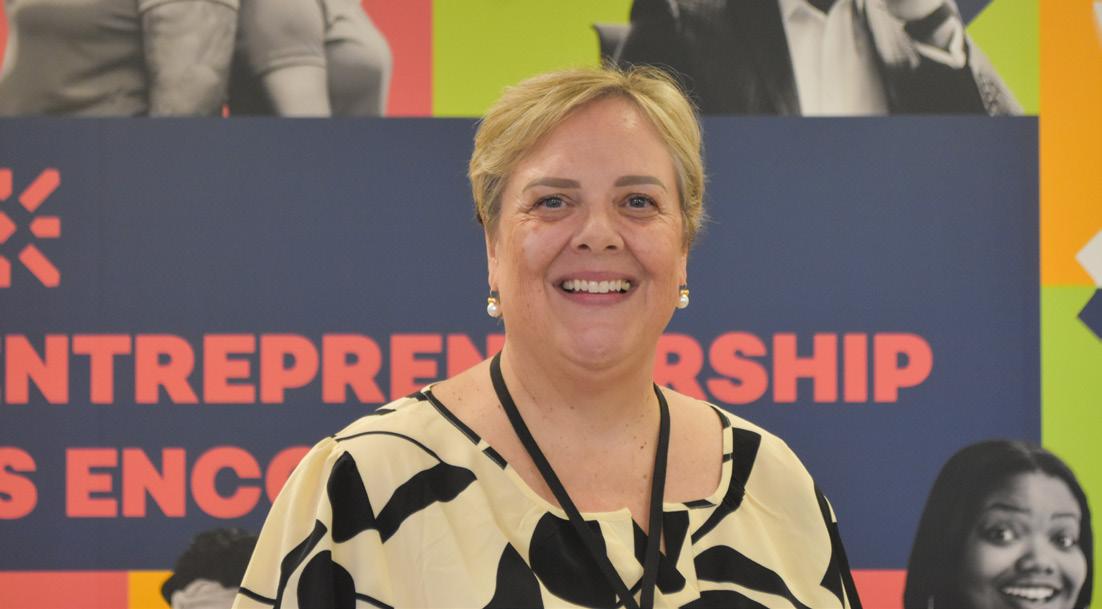





11 “2025 Changes in Employment Verifications,” was presented by Tammy Henry, VP of Client Success, with Data Facts. 12 Dr. Kimberly Estep, PH.D., and Dr. Derriell Springfield with WGU. Dr. Estep was a keynote speaker also. Her topic was “Symbolic Leadership.” 13 Angela Lamb, MPA, CNP, PHR, SHRM-CP, HR Director at Porter-Leath, was the lucky grand prize winner of 7 nights @Sandestin Golf and Beach Resort donated by LeeAnn Bailes Foster, CEO of Team Foster HR Strategy in Knoxville. 14 Tyler Stegall was one of the conference emcees wearing pearls in honor of Dr. Deneen Lester, who was unable to attend.15 Cynthia Thompson, Editor | Publisher, of HR Professionals Magazine, Judy Bell with Judy Bell Consulting, and LeeAnn Bailes Foster, CEO of Team Foster HR Strategy, were the co-hosts for the conference. 16 Brad Federman and Jennifer Blake with PerformancePoint, LLC.
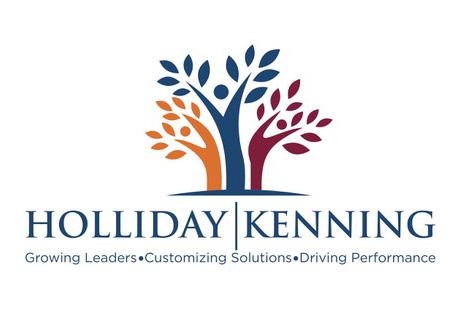
By DR. TRISH HOLLIDAY, SHRM-SCP and LUCINDA KENNING, MBA
The speed with which the current business world is changing, along with worldwide political volatility, social transformations, and shifting workforce expectations leave many organizations and leaders feeling as though they will never catch up. The resources needed to manage today’s workload can leave little time or energy for contemplating tomorrow’s challenges. Leaders recognize the need to change and genuinely want to evolve but are simply exhausted and overwhelmed. They don’t know where or how to start. This dilemma inspired the creation of Holliday|Kenning, a forward-thinking consultancy dedicated to helping organizations adapt through a unique, practitioner-based approach to leadership development. As Founding Partner Dr. Trish Holliday emphasizes, “We are practitioners for practitioners. We don’t just teach leadership — we live it, model it, and embed it in real organizational contexts.”
Traditional leadership models, including top-down decision making, authoritarian chain of command, and transactional management no longer meet the needs of today’s workers or current market realities. The employee experience is becoming increasingly important, with Gallup research showing that employees who strongly agree that their employer provides a positive employee experience are 4.6 times more likely to be engaged at work. In today’s war on talent that can be the difference between a high performing workforce and one producing at the bare minimum. Market disruption has created a climate where organizations must react quickly to new ways of doing business to stay relevant and viable. This new era requires leaders to lead with Empathy, Resilience, and Agility. As Satya Nadella, CEO of Microsoft, puts it, “True leadership isn’t about having all the answers but about creating a space where collective brilliance can flourish.”
Creating a space where people feel safe to contribute requires an organization’s leadership to model empathy. The concept of empathetic leadership is frequently misunderstood as “being nice” and, as such, often undervalued or even maligned. To be clear, leading with empathy is not allowing underperformance or violations of workplace rules or norms. Empathy in leadership is understanding the realities of employees through active listening and inclusive communication, basic building blocks of trust. According to the Harvard Business Review, employees at high-trust companies report 74% less stress, 106% more energy at work, 50% higher productivity, 13% fewer sick days, 76% more engagement, and 29% more satisfaction with their lives, compared with employees at low-trust companies. Empathetic leadership drives performance, especially in diverse, remote, or hybrid teams whose daily work doesn’t lend itself to high degrees of management supervision.
Workplace resilience comes in two distinct forms. The first is personal resilience, the ability of individuals to maintain energy and engagement in uncertain times. These are employees who reflect on new ways of doing things and create innovative solutions, understanding that failure is a part of the process. This type of resilience requires employees to experience four levels of workplace safety: a sense of belonging, freedom learn and ask questions, feeling valued as a contributor, and finally, permission to challenge the status quo. In addition to personal resilience, an organization itself must also be resilient. This means the organization’s culture must support experimentation, systems must be in place to facilitate challenges of the status quo, and procedures must be designed to be flexible. According to Arianna Huffington, Founder of Thrive Global, “Resilience is not a fixed trait we’re born with – it’s a skill we can practice and master.” This good news is counter to previous thought that organizational resilience is created by individuals who are inherently resilient. Tools such as well-being check-ins, post-project reviews, and flexible norms and policies allow employees to practice and master resilience.
The term VUCA was coined by the U.S. Army War College to describe the cold-war world and the need to make decisions in an environment that is volatile, uncertain, complex and ambiguous. This term is now widely used in the business environment to emphasize the need for agility in decision making. Today’s leaders often need to make decisions with limited information about current and desired future states while retaining the ability to change direction rapidly as new facts
emerge. Agility requires openness and transparency instead of the pursuit for perfection. Analysis of case studies, scenario planning, and real-time feedback loops are practical tools that leaders can develop and use to lead with agility.
Leading with Empathy, Resilience, and Agility in today’s world is essential for recruiting and retaining the best talent who drive exceptional organizational performance. Employees who feel valued and trusted overcome obstacles with new and creative thinking and apply timely solutions. Transforming to this leadership model begins with intentional practice, not just knowledge.
Holliday|Kenning is poised to be a trusted partner with organizations as they transition to human centered leadership by offering toolkits, leadership training experiences, and follow-up coaching. These resources include real-time activities, such as applying the E.R.A. framework to current and relevant leadership dilemmas. Using their unique Learn It, Practice It, Lauch It model, leaders emerge ready to deploy their newly acquired skills and insights. “Change starts when leaders choose to show up differently — and we’re here to guide that journey,” Lucinda Kenning, Founding Partner, Holliday|Kenning.
Mini Checklist: Is your Organization Leading in a New E.R.A.?
✅ Do your employees feel seen, heard, and supported?
✅ Are employee well-being and organizational performance equally valued in your team?
✅ Do leaders respond to uncertainty with clarity and speed?
Holliday | Kenning can set you on the path of answering all three questions with a resounding “yes”! Contact us at www.HollidayKenning.com






























Enhance your HR credibility with a globally recognized certification.

• Master essential skills to confidently tackle real-world HR challenges.



• Stand out in a competitive job market with a solid HR foundation.





• Unlock doors to career advancement opportunities.

APPLY TODAY! shrm.org/cert25




INVEST IN YOUR FUTURE WITH SHRM CERTIFICATION








Strengthen your workplace impact as a senior HR leader.
• Boost your strategic influence within the organization.
• Drive transformative HR policies that align with business goals.


• Signal to executives and peers that you’re ready to lead at the highest level.





















Introduction
Navigating employee benefits compliance can be complex and time-consuming for employers, especially those administering multiple health and welfare plans. That’s where an ERISA wrap plan document comes in. A wrap plan document helps ensure compliance with legal requirements under the Employee Retirement Income Security Act of 1974 (ERISA) and consolidates the required Form 5500 reporting and disclosure obligations. Below is a summary of how a wrap plan helps with compliance by streamlining reporting and reducing the risk of employer penalties.
Detail
We first need some background to understand how a wrap plan can help with compliance obligations under ERISA.
• ERISA generally applies to employer group plans that provide health, life, disability, and other welfare benefits.1
• ERISA requires each applicable arrangement to have a written plan document2 and for the plan administrator to provide a summary plan description (SPD) to summarize plan terms in easy-tounderstand language.3
• Both the plan document and the SPD (which are sometimes combined into one document) must include certain legally required provisions,4 along with optional provisions that may be added to protect the plan fiduciaries (among other things).
• In addition, plan administrators must file a Form 5500 for each benefit plan subject to ERISA5 (unless an exception applies, such as the plan benefits fewer than 100 participants as of the first day of the plan year6) and distribute a summary of the Form 5500’s contents to participants, known as a summary annual report (SAR).7
Wrap it up to ensure compliance, consolidate reporting, and reduce the administrative burden
• A plan’s master contract, policy, and/or certificate are typically written to satisfy state insurance law and describe applicable contractual obligations. As a result, these documents often do not include all the provisions required for ERISA plan documents and SPDs.
• Wrap documents supplement (or wrap around) existing documents to include the necessary ERISA language in both the plan document and the SPD. They can also include supplemental information, for example, to protect plan fiduciaries.
• A wrap plan is especially useful for employers with multiple benefit arrangements that require a Form 5500 and SAR.
• The employer can bundle all benefits (self-insured and fully insured) into one “mega-wrap” plan, so that only a single Form 5500 and SAR are required for all applicable benefits.
• This approach reduces preparation costs and filing fees, and it can help streamline benefit administration.
• Plans may need amendments to comply with changes in the law. Wrap plans can lower the administrative cost associated with plan amendments since typically only a single amendment to the wrap plan is needed.
Consequences of failing to comply with ERISA documentation requirements
While there are no specific penalties for failure to prepare a written plan document and SPD, the risk to the employer can still be significant. The following points highlight some key risks and potential consequences of not complying with ERISA documentation requirements.
• The law requires a plan administrator to provide plan documents and SPDs within 30 days of a participant’s request,8 which can be challenging if these items do not exist. Penalties of up to $110 per day can apply for failure to comply.9
BY STACEY STEWART
• Courts can impose criminal penalties for willfully violating certain ERISA requirements, including SPD disclosure.10 Penalties can reach up to $100,000 ($500,000 for an entity) and include up to 10 years in prison.11
• Courts may apply a less favorable standard when reviewing benefit claims instead of the ERISA standard, which generally only overturns arbitrary and capricious claims denials.
• ERISA requires plan fiduciaries to follow the terms of the plan document,12 which can be difficult if the plan document does not exist or is unclear.
• A lack of clear plan documentation puts the employer at risk in proving plan terms during a benefits lawsuit. Participants may base the suit on past practices or other extrinsic evidence that could be unfavorable to the employer.
A wrap plan can help a welfare plan meet ERISA’s plan document and SPD requirements by wrapping around non-compliant carrier certificates and documents and including the necessary ERISA language. Additionally, for employers with a participation level at or over 100 participants in multiple welfare plans, the wrap plan can consolidate all plans into one document, requiring only one Form 5500 filing, which reduces the costs of compliance with ERISA Form 5500 filing requirements.

Stacey Stewart, JD, LLM in Taxation
Senior Vice President, Senior ERISA & Employee Benefits Compliance Officer
References
1 - ERISA §3(1).
2 - ERISA §402(a)(1).
3 - ERISA §102(a) and 104(b)(1).
4 - ERISA §402(b) and §102(b).
5 - ERISA §103(a)(1).
6 - 29 CFR §2520.104-20(b)(1).
7 - 29 CFR §2520.104b-10(a).
8 - ERISA §104(b)(4), ERISA §502(c) and 29 CFR §2520.104b-1(b)(2).
9 - ERISA §502(c)(1) as adjusted by 29 CFR §2575.502c-1.
10 - ERISA §501.
11 - Ibid.
12 - ERISA §404(a)(1).

The McGriff Journey ® mobile app is the solution.
Deliver 24/7/365 communication about benefits, employee recognition, wellness and more. Let McGriff Journey:
• Serve as a platform for year-round employee communications
• Drive engagement in company-sponsored programs
• Provide education to help employees lower health care costs
• Encourage team building and collaboration
• Help create a culture of health and well-being
• Support employee incentive programs


Learn more about how to curate a comprehensive employee experience. Contact McGriff to get started.


FEDlogic consists of experienced professionals with extensive backgrounds in federal agencies
Our team is committed to utilizing their decades of exper tise to help families navigate and access the federal and state programs that are available to them
FEDlogic provides exper t guidance across all federal and state benefits, extending beyond Medicare navigation offering suppor t for over 1,000 state and federal programs Exper t consultations are unlimited, confidential, and free for employees and their household members

Good for employees, good for you.
proposal@fedlogicgroup com www fedlogicgroup com
An independent actuarial analysis provides our conservative savings basis for transitioning off a group health plan, excluding factors like medication conditions, age, and catastrophic claims costs that significantly drive high claims Employers typically have 2 4x greater initial claims savings than estimated




The core mission of FEDlogic is to provide families with unbiased and unlimited access to expert knowledge at no cost We aim to be a supportive resource during critical moments of need and crisis. While our services offer substantial value in reducing healthcare expenditures, this has never been our primary focus. Our ultimate goal is to empower individuals with the information and support they need to navigate their options.

U n b i a s e d A d v o c a c y
P r o v e n R e s u l t s .
We connect employees with expert advocates to explore all federal and state healthcare programs, offering alternative healthcare options with comprehensive coverage at lower costs.






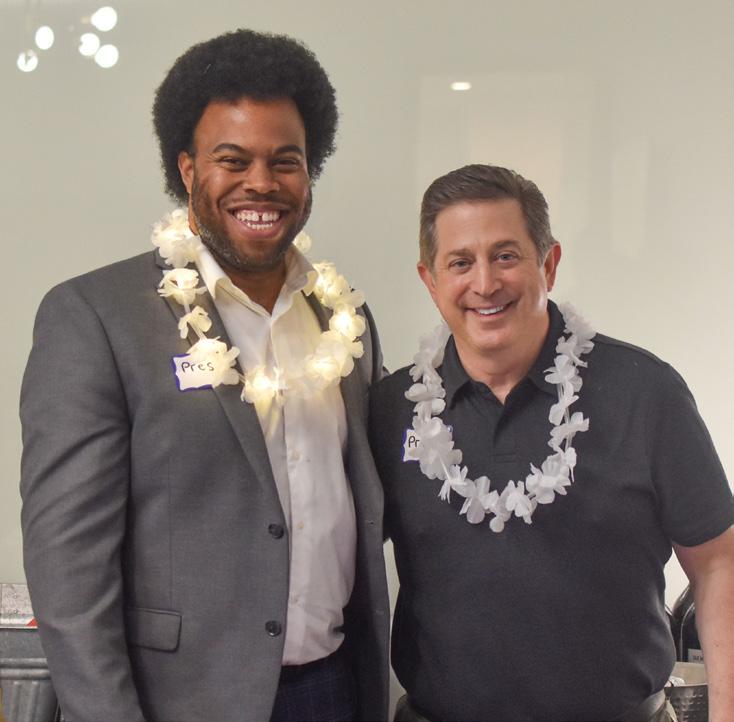
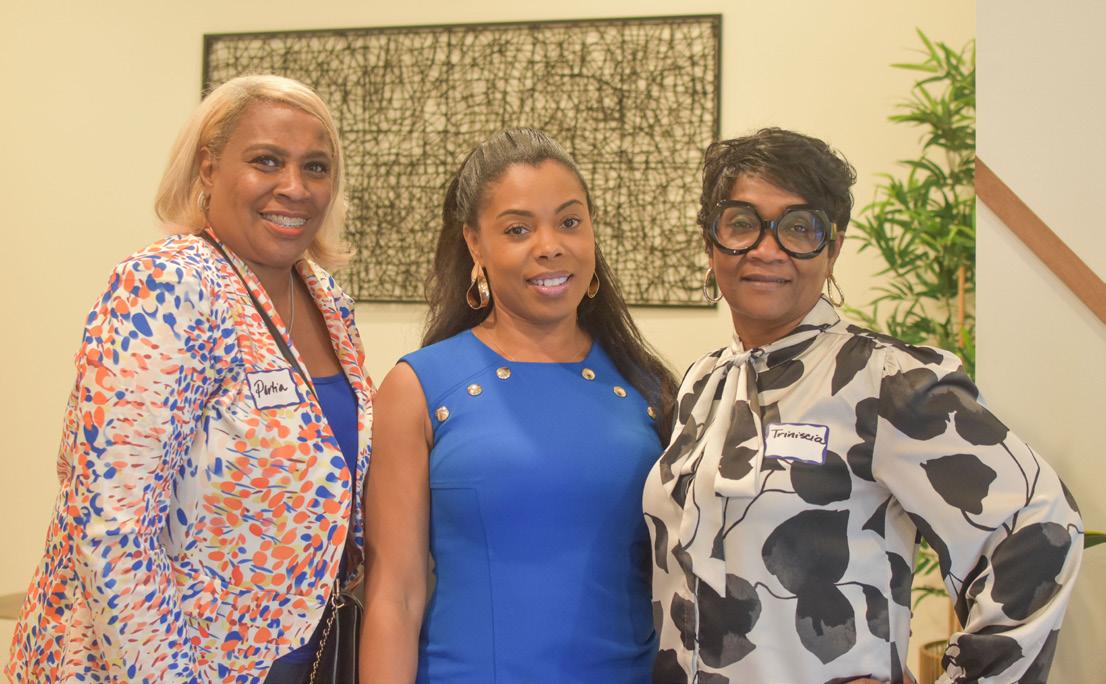










Talent shortages.
Conflict resolution.
New technologies such as AI.
Difficult conversations.
Business objectives.
Remote work.
Recruitment marketing.
HR professionals are perpetually challenged by complexity and chaos, continually eclipsed and sometimes downright thwarted by expectations, economic pressures, and change. Responsible for workforce wellbeing, HR is often the last on the list when it comes to prioritized career pathing, learning, and credentialing.
Years ago, there was a television spokesperson who would yell, “Stop the Insanity!” Fast-forward to 2025, and many of us have a similar sensation. The reality is that much of what we’re experiencing is what HR has always faced. It’s because we’re the first stop whenever business leaders need to ensure employee engagement, plan for unpredictable labor requirements, and develop strong leadership pipelines. Always in the midst of organizational transformation, HR professionals desperately need learning and development to bridge gaps, acquire new skills, and cultivate resilience. It’s also why they turn to us, HRCI.
For more than 50 years, we have set the global standard for HR expertise and excellence. HRCI develops and offers world-class learning, along with eight global certifications. Over 95 percent
By AMY SCHABACKER DUFRANE
of Fortune 500 companies have HRCIcertified professionals among their leadership ranks. We’re the only HR certification organization to maintain third-party accreditation from the NCCA, making HRCI the global standard in the HR field.
Getting started with HRCI means you can access your courses from anywhere, on any device, including computers, tablets, and smartphones. The certificate in HR Fundamentals earns 32 HR credits and encompasses all 14 of our HR Skills courses, including coaching, progressive discipline, communication and HR, problem-solving, HR Federal Law, and exit interviews. Feeling that you have fundamentals covered? Consider an HRCI Pro certificate course instead, such as:
§ HRCI Pro: People Analytics covers essential topics in analytics for an organization, including analytics that support the workforce, recruitment analytics, and the use of analytics.
§ HRCI Pro: Benefits includes medicalrelated benefits, retirement plans and supporting health and wellness.
§ HRCI Pro: Talent Acquisition covers attracting top talent, making the right hire, and managing the candidate experience.
§ HRCI Pro: Workplace Wellness offers dimensions of employee wellness, management practices that support wellness, and developing healthy workplaces.
The HRCI Pro Series is a collection of certificate courses that focus on advanced HR and business concepts. Still looking for more? HRCI’s full catalog includes HR Ethics, Finance Essentials, Compensation Communication, and Critical Thinking. There is something for everyone, regardless of where they are in their career journey.
Any journey starts with the first step. HRCI ENGAGE is an online community for members at every stage of their HR career. It’s completely free and a great place to network with and learn from your peers, whether local or from around the world. While you’re there, check out the schedule for our almost daily webinars, which are another valuable source of learning on topics from Agentic AI in HR to building high performance teams.
Let’s get back to the obstacles preventing you from making time for your own development journey. HR will always be the foundation of the organization, responsible for the people who power it and the plethora of daily possibilities. And the same hurdles that were in place years ago – talent acquisition and retention, staying current with the latest technology, and driving engagement and productivity – remain evergreen.
The only way to be sure of the future is to be well-prepared for whatever else it may hold. You owe it to your organization, your workforce, and your colleagues to be current on what’s working in HR. Most of all, you owe it to yourself. There’s no time like the present to earn your HRCI certification – join the thousands of HR professionals who’ve made the commitment to their careers.

Amy Schabacker Dufrane, Ed.D., SPHR, CAE, is CEO of HRCI® — where she is responsible for driving and disrupting the conversations about building highperforming, strategic HR teams. An engaging thought leader at the intersection of talent strategy and continuous learning, Dr. Dufrane is an award-winning leader and celebrated keynote speaker on the human side of successful business strategy in the 21st century.

From HRCI—the trusted leader in human resources learning and certification for over 50 years—comes a fresh, innovative online space for HR professionals around the world to connect, collaborate, and grow.

• For Every Career Stage: Emerging professionals and seasoned leaders have a place in this dynamic community.
• Forge Valuable Connections: Engage with a global network of peers and industry experts who share your vision for HR excellence.
• Develop Your Strategic Edge: Stay ahead of HR trends, address current challenges, and access resources for professional growth.
















The Trump Administration’s Mandates on DEI and Its Impact to Employers












By NAKOTA G. WOOD and JAMES V. THOMPSON





Diversity, equity, and inclusion (“DEI”) and diversity, equity, inclusion, and accessibility (“DEIA”) initiatives have been a major talking point for employers over the last few years. DEI initiatives were created with the intent to promote fair treatment and participation for all, particularly individuals who have historically been marginalized and faced discrimination. Although DEI is a broad term that is not defined under Title VII of the Civil Rights Act of 1964 (“Title VII”) or any other federal statute, it has found notoriety in multiple presidential executive orders over the last decade. The current Trump Administration, from its opening day of January 20, 2025, has most recently issued a number of executive orders posed to end preferential treatment based on DEI and DEIA. Two specific Trump Administration executive orders need to be at the forefront of employers’ minds in order for businesses to ensure compliance and plan accordingly in addressing human resource needs and activity.
Executive Order 14151
Trump’s Executive Order 14151 titled “Ending Radical and Wasteful Government DEI” (“Executive Order 14151”) seeks to end DEI and DEIA programs and offices within the Federal government. The order rescinds President Biden’s Executive Order 13985, “Advancing Racial Equity and Support for Underserved Communities Through the Federal Government.” The Biden order required Federal agencies and entities to submit “Equity Action Plans” detailing how the agencies furthered the DEI goals of the Federal Government.
Under Executive Order 14151, the Director of the Office of Management and Budget (“OMB”), Attorney General, and the Director of the Office of Personnel Management (“OPM”) are to coordinate an end to all discriminatory programs. This Order includes DEI- and DEIA-related initiatives as being such “discriminatory” programs. Thus, the OPM Director is to review and revise all existing Federal employment practices, union contracts, and training policies to comply with this end to DEI. Employee performance review and other employment practices are now to reward individual initiative, skills, performance, and hard work and not to consider any DEI or DEIA factors, goals, or mandates. Further, each Federal agency, department, or commission head is to terminate all DEI, DEIA, and “environmental justice” offices and positions (such as “Chief Diversity Officer”) and provide a list of all such positions and their related programs, services, and expenditures as of November 4, 2024, (the day before President Trump’s latest election). While this order does overhaul DEI-related employment practices, its scope is limited to the Federal Government as an employer and contractor.
Trump’s Executive Order 14173, “Ending Illegal Discrimination and Restoring Merit-Based Opportunity” (“Executive Order 14173”) is
poised to have a more profound impact on DEI and DEIA initiatives among private employers. Instead of addressing governmental personnel practices, it addresses the policy of protecting individuals from discrimination based on race, color, religion, sex, or national origin under the Civil Rights Act. The order does not define what constitutes “illegal discrimination,” but nonetheless takes the position that Federal civilrights laws adequately protect Americans from protected class-based discrimination, while DEI and DEIA programs, in turn, violate those civil rights protections.
Executive Order 14173 requires all Federal executive departments to “terminate all discriminatory and illegal preferences, mandates, policies, programs, activities, guidance, regulations, enforcement actions, consent orders, and requirements.” Interestingly, the Department of Labor’s Federal Contract Compliance office must immediately cease promoting “diversity,” and federal contractors are no longer responsible for taking “affirmative action” nor allowed to engage in workforce balancing based on race, color, sex, sexual preference, religion, or national origin. Further, federal contractors and grant recipients must include contract provisions certifying that they do not “operate any programs promoting DEI that violate any applicable Federal anti-discrimination laws.”
Aside from the provisions striking at federal contract and grant terms, Executive Order 14173 requires the heads of all agencies and the Attorney General to take all appropriate action to advance policies of “individual initiative, excellence, and hard work” in the private sector, as well as to provide a report to the President on recommendations for enforcing Federal civil rights laws and taking other measures to encourage the private sector to end discrimination and preferences, including DEI. The report is to include a strategic enforcement plan that notes:
• A listing of the most egregious and discriminatory DEI practitioners in each sector of each Federal agency;
• Specific steps to deter DEI programs or principles;
• Identification of up to nine (9) potential civil compliance investigations of publicly traded corporations, large non-profit corporations or associations, foundations with $500 Million or more in assets, state and local bar and medical associations, and higher education institutions with endowments over $1 Billion;
• Potential regulatory action and guidance;
• Litigation potentially appropriate for Federal lawsuits or intervention; and
• Other strategies to encourage private businesses to end DEI preferences.
Executive Order 14173 applies to all companies, including private businesses, and has implications to reach both large and small employers.
As a result of Executive Order 14173, a February 5, 2025, memorandum from the Attorney General, stated that “the Department of Justice’s Civil Rights Division will investigate, eliminate, and penalize illegal DEI and DEIA preferences, mandates, policies, programs, and activities in the private sector….” On March 19, 2025, the Justice Department and EEOC issued joint guidance warning against unlawful DEI-related discrimination. In the accompanying press release, EEOC Acting Chair Andrea Lucas stated:
Far too many employers defend certain types of race or sex preferences as good, provided they are motivated by business interest in ‘diversity, equity, or inclusion.’ But no matter an employer’s motive, there is no ‘good,’ or even acceptable, race or sex discrimination. . . . In the words of Justice Clarence Thomas in his concurrence in Students for Fair Admissions, ‘two discriminatory wrongs cannot make a right.’
The Justice Department and EEOC’s technical document, “What to Do If You Experience Discrimination Related to DEI at Work,” now encourages employees who have experienced discrimination to contact the EEOC as soon as possible due to strict time limits for filing charges.
Both of these executive orders have been subject to legal scrutiny and challenges in the federal court system. At the time this article was drafted, two federal district courts have issued preliminary injunctions on various provisions of these executive orders. The preliminary injunctions temporarily prohibit the Trump administration from taking certain actions under the orders until the cases are fully resolved. One injunction precludes the U.S. Labor Department from pausing, blocking, or canceling a grant, changing the grant terms mid-period, or initiating any False Claim Act enforcement. Chi. Women in Trades v. Trump, Case No. 25 C 2025, 2025 U.S. Dist. LEXIS 70459 (N.D. Ill. April 14, 2025). While it may apply specifically to one discrete grant recipient, the general premises—that grant recipients have standing to challenge the Executive Orders and may face irreparable harm from enforcement of the orders, and that public interest favors a preliminary “time out” while constitutionality is determined—may spread and apply in other similar situations.
Additionally, the U.S. Supreme Court very recently ruled in a reverse discrimination claim that Title VII does not require a member of a majority (non-minority) group to show “background circumstances” to support the suspicion that a defendant employer discriminates against the majority. Ames v. Ohio Dep’t. of Youth Servs., No. 23-1039, 2025 U.S. LEXIS 2198 (June 5, 2025). Simply put, it is unlawful to fail or refuse to hire or to discharge any individual, or otherwise discriminate against any individual, with respect to the individual’s compensation, terms, conditions, or privileges of employment because of such individual’s race, color, religion, sex, or national origin—regardless whether that individual is in a minority group or a majority group. This ruling reduces the previous standard, at least as used in the Sixth Circuit, to establish a reverse discrimination claim. Thus, the Ames ruling may help bolster these Executive Orders to the extent DEI initiatives are seen as favoring minority-group individuals on the basis of race, color, religion, sex, or national origin, rather than on the individuals’ merit and work performance.
Just a few short years ago, “DEI” was the trendy buzzword in HR, so that companies could show their commitment to treating all employees and job candidates fairly. Now, those notions of diversity, equity, and inclusion, meant to cast a wider net in job markets and create more stepstools to give everyone a more equitable opportunity at successful employment, have been labeled as harmful in encouraging employee hiring and promotion for discriminatory reasons. The same classifications used in 1964 and subsequent years to protect against discrimination are now still relied upon to prevent discrimination now, but almost in an inverse sense. The provisions of Executive Order 14173 calling for the Attorney General’s activity in potential civil compliance investigations, litigation, and a “listing of the most egregious and discriminatory DEI practitioners” certainly casts a chilling fog of concern for employers. Notably, the timing of these Executive Orders coming so quickly after the start of a new Administration sets the tone for a long four years ahead. DEI may indeed be dead, in convalescence, or even in an isolation ward for the present time and near future, depending on how courts address challenges to these Executive Orders.
In the meantime, employers are left to expect the best and plan for the worst. Employers should be mindful of decisions where the challenged basis could be reverse-diversity discrimination. For example, an employer might be wary of a white male candidate potentially claiming reverse discrimination if the employer selects someone else for a position or promotion if the other person was younger, female, or of a different race. The employer would be on the defensive, once the claim is raised, to justify its decision based on other objective or subjective factors. Employers should seek to have solid, merit-based reasons for all employment-related decisions, from a potential employee’s application to promotions between employees, to even termination over a job performance or workplace environment dispute. Employers must also be vigilant in training all levels of management on how to address DEI practices so that such practices do not become an easy means of unraveling otherwise well-thought employment actions. Majority-group members no longer have an extra hurdle to establish background circumstances for suspicious reverse discrimination, so they may be more emboldened to challenge adverse employment actions. Employers cannot “blow off” allegations merely because the claimant is in a traditionally advantaged demographic group (e.g., white, young, male, straight, or Christian). Having evaluated discrimination claims based on protected classes from certain fixed or focused perspectives for many years, employers will now need to consider potential discrimination concerns from multiple additional angles in order to ensure employment actions are handled fairly and responsibly for all persons involved.

Nakota G. Wood, Attorney nwood@raineykizer.com
Rainey Kizer Reviere & Bell PLC www.raineykizer.com
James V. Thompson, Attorney jthompson@raineykizer.com
Rainey Kizer Reviere & Bell PLC www.raineykizer.com


From its creation in 1965 as a regional extension of the American Society for Personnel Administration, SHRMAtlanta has blossomed into one of the most active and respected chapters in the SHRM network. For six decades, SHRM-Atlanta has grown alongside the city it calls home—shaping workplaces, nurturing leaders, and amplifying the value of the HR profession. As the chapter celebrates its 60th anniversary, SHRM-Atlanta has become a dynamic space for HR professionals to convene, share best practices, and lead business transformation in metro Atlanta.

The mid-1960s marked pivotal growth in human resource management as industries adapted to evolving workforce demands. In this context, SHRM-Atlanta emerged to serve local HR professionals seeking community, expertise, and leadership development.
From the 1970s onward, SHRM-Atlanta prioritized supporting HR certification, offering PHR and SPHR review courses and supporting a growing network of credentialed professionals. In the broader context, ASPA transformed into SHRM in 1989,
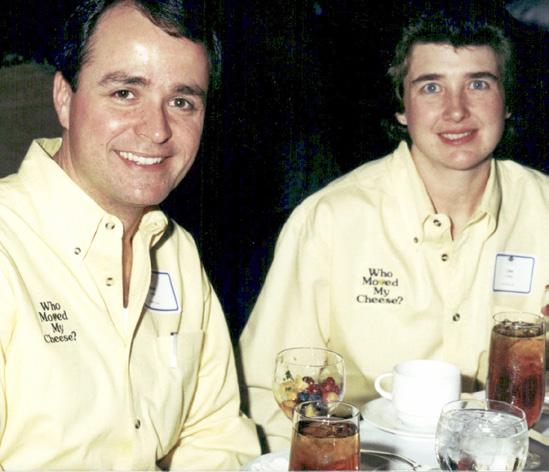
underscoring the profession’s evolution toward strategic business partnership. SHRM-Atlanta embraced this shift, extending HR’s role from administrative to strategic across Atlanta’s growing business community.
This emphasis aligned the chapter with broader SHRM initiatives, such as the development of professional HR competencies and chartered learning frameworks. Over time, Atlanta became a recognized center for certification prep and continuous learning, reinforcing its educational mission.
“Most industries have professional associations and societies, but I believe SHRM sets the standard as far as these organizations go— and the Atlanta Chapter raises the bar!” said member Ruth Hanna, SPHR, in 2013.
The chapter expanded with it—launching geographically regional events in Atlanta, specialty groups, SOAHR: the largest HR conference in Georgia, and awards that empowered HR professionals at every stage of their careers. At the end of this period, SHRM-Atlanta transitioned from entirely volunteer-led to an association management company for operational support.
In 2015–16, SHRM-Atlanta set ambitious goals for the next decade with its 2020 Vision: A comprehensive plan to “fully deliver on our mission of empowering Atlanta’s HR professionals”

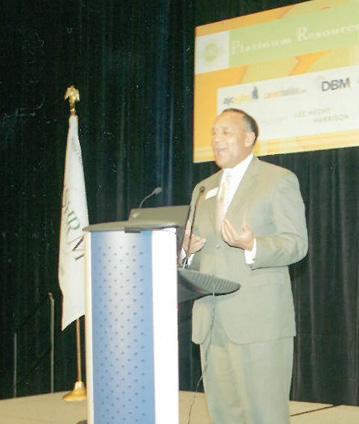

through innovative programming, deeper business integration, and volunteer leadership.
Tywana Minor, who served as SHRM-Atlanta president during its golden anniversary, said at the time: “Over the last 50 years, the association has greatly impacted the business community, helping Atlanta-based HR professionals navigate trends and challenges and forge long-lasting professional relationships.”
These initiatives marked a turning point, reflecting an organization confident in its influence and role in shaping HR’s future.
That same year, the organization would hire its first CEO, Jeanne Artime, and soon after would have its own full-time staff.
Of course, 2020 would also be an inflection point and perhaps not as envisioned, as SHRM-Atlanta navigated the worldwide pandemic.

In 2017, Artime had aptly written: “Rethink everything. To some it might sound ominous, but for those of us at SHRM-Atlanta, our new motto is exciting and creative—and full of upside potential. We know that we’ll need to be agile, we’ll need to listen closely to our members and future members to ensure we are delivering on our value proposition, and we’ll need to remain committed to rethinking everything if we hope to stay fresh and relevant.”
In addition to virtual conferences and new membership models, 2020 caused a powerful shift in HR professionals’ roles. Members’ desire for new learning approaches, delivery methods, and strong emphasis on connection prompted change for the chapter. Through a reorganization, SHRM-Atlanta would position volunteers to craft strategy and champion community, with staff managing operations. Every SHRM-Atlanta gathering now has both formal and passive components related to fostering connection and building community. And the chapter confirmed core values that emphasize inclusion and “lean into change as a necessary part of growth.”

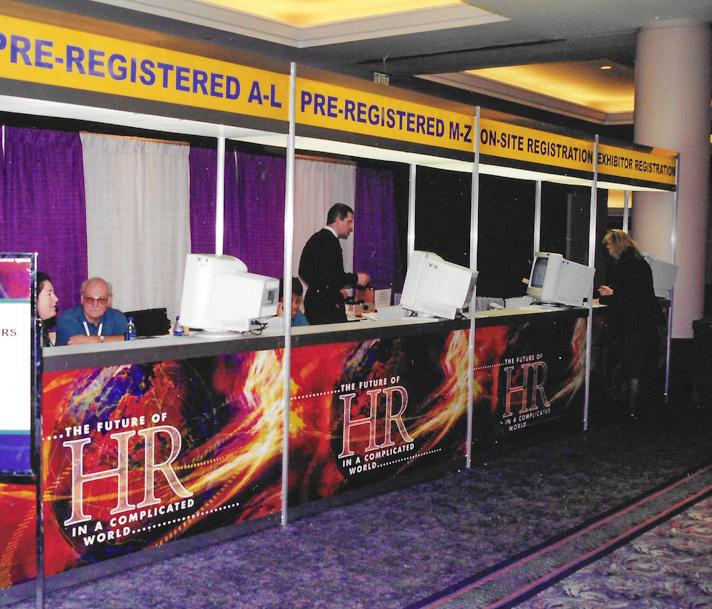
That commitment to innovation and values-led leadership still shapes the chapter’s culture today. From DEI and well-being to ethics and equity, SHRM-Atlanta has continually pushed the boundaries of what it means to lead with purpose. As HR grows more essential in shaping resilient, equitable workplaces, SHRM-Atlanta stands as a model of how local chapters can advance the profession— driving organizational efficacy, business impact, and community trust.
From its creation in 1965, SHRM-Atlanta has grown into a robust and influential HR community. Guided by purpose and a mission to empower professionals, it has stayed relevant through strategic evolution, innovative programming, fundraising leadership, and deep member engagement.

To lead a chapter for 60 years takes more than structure—it takes vision, dedication, and an unwavering belief in people. SHRMAtlanta’s past presidents, board members, and volunteers have constructed a foundation that future generations will continue to build upon.
Later this year, the SHRM-Atlanta Board of Directors will define the organization’s next strategic plan.
“The story of SHRM-Atlanta is one of transformation, service, and shared success,” said CEO Jason Cline, CAE. “For six decades, this chapter has been a catalyst—sparking dialogue, strengthening networks, and preparing HR professionals to meet the moment again and again.


“We celebrate 60 years of impact—and the generations of leaders still to come. We honor the past not as a memory, but as momentum.”

Staying compliant with Form I-9 and E-Verify requirements is more important than ever for U.S. employers. With evolving regulations, updated forms, and increasing enforcement, it’s easy to fall behind.
Here’s what you need to know about Form I-9 and E-Verify in 2025.
The current spotlight on immigration compliance makes accuracy critical. Employers are required to verify the identity and employment eligibility of every new hire, retain records properly, and respond promptly to requests for inspection.
Happening now:
• Increased audits. The U.S. Immigration and Customs Enforcement (ICE) and the Department of Homeland Security (DHS) are stepping up audits, worksite inspections, and enforcement actions to ensure employers aren’t unknowingly hiring unauthorized workers.
Heightened enforcement means every I9 error (expired document, missing signatures, etc.) is now more likely to be flagged and penalized.
• Changing data analytics. Federal agencies are turning toward artificial intelligence and data analytics to detect inconsistencies in I-9 forms. This approach will help them flag potential violations easier, which increases the chances of an audit.
• Higher non-compliance penalties. As of 2025, penalties for I-9 violations have risen significantly. For example, the penalty for the first order of employing an undocumented worker was $698 to $5579. In 2025, it’s $716 to $5724. Employers may face fines ranging from hundreds to thousands of dollars per violation, with repeat offenders at risk of even harsher consequences.
Using the updated form and being aware of the changes is the natural first step in keeping your process aligned and compliant.
Revised form: The revised Form I-9 with an edition date 01/20/25 and an expiration date 05/31/2027 is now available for download, while multiple previous editions remain valid until their respective expiration dates:
• Form I-9 (08/01/23 edition) that is valid until 05/31/2027
• Form I-9 (08/01/23 edition) that is valid until 07/31/2026 (Employers using this form must update their electronic systems with the 05/31/2027 expiration date by July 31, 2026.)
The updates to be aware of are:
• The fourth checkbox in Section 1 was renamed to “An alien authorized to work.”
• The descriptions of two List B documents were revised in the Lists of Acceptable Documents.
• Appropriate statutory language and a revised DHS Privacy Notice to the instructions were added.
April 3, 2025: E-Verify and E-Verify+ updated the Citizenship Status selection during case creation to reflect this statutory language. The selection “A noncitizen authorized to work” will be updated to “An alien authorized to work.”
It’s important to note that:
• If an employee attests on Form I-9 as “A noncitizen authorized to work,” the employer must select “An alien authorized to work” in E-Verify.
• E-Verify cases will display “An alien authorized to work,” while employees and employers may continue to see “A noncitizen authorized to work” on Form I-9, depending on the form edition being used.
• E-Verify+ participants will see the updated 01/20/25 edition date and 05/31/2027 expiration date reflected in Form I-9NG.
to Ensure Your Organization is I-9 and e-Verify Compliant
Maintain your company’s compliance with the latest I-9 and E-Verify requirements with these best practices:
• Use the most current Form I-9. Download and use the 01/20/25 edition of Form I-9. Double-check that your HR systems and form libraries have been updated.
• Complete I-9 forms on time. Section 1 must be completed by the employee no later than their first day of employment. Section 2 must be completed by the employer within three business days of the employee’s start date.
• Update E-Verify processes. Ensure your E-Verify system reflects the updated terminology. If you use E-Verify Web Services, update integration protocols accordingly.
• Train HR staff on 2025 updates. Conduct a refresher session on new form terminology, timing rules, and system changes. Provide a checklist for correctly completing the revised Form I-9.
• Perform internal I-9 audits regularly. Identify and correct missing signatures, expired documents, and outdated forms.
• Retain and store forms according to federal requirements. Keep each I-9 for three years after hire or one year after termination, whichever is later.
Consider an Automated I-9, E-Verify Solution I-9 and E-Verify process automation can help you proactively stay in compliance.
• Decrease errors. An automated solution detects errors that could cause your company to get fined during an audit. It also allows you to automate tasks that minimize human data entry mistakes.
• Save time. Managing I-9 compliance manually can suck up resources. Automation can handle these processes in seconds.
• Simplify storage. With automatic purge features, your company’s records are streamlined, up-to-date, and easy to audit.
• Minimize fines. Automating the process decreases the instances of errors, shielding your company from costly fines.
A little attention to detail now can save your team time, money, and headaches later. Prioritize training, update your systems, and audit your processes regularly. And consider automating your processes to keep it compliant and efficient.
Sources:
https://www.uscis.gov/i-9-central/form-i-9-related-news/minorchanges-to-form-i-9-and-e-verify-updates
https://www.hrlogics.com/rising-i-9-penalties-criticalcompliance-strategies-for-2025
https://aaimea.org/i-9-audits-ice-crackdowns-how-to-staycompliant-in-2025/

By Jenny Dearborn and Kelly Rider
The Insight-Driven Leader, Jenny Dearborn and Kelly Rider offer a timely and compelling argument for why HR must transform into a data-driven strategic powerhouse. This book is not merely a how-to guide for HR analytics. It’s a call to action, and a blueprint for CHROs and business leaders who are ready to align people strategy with business outcomes through the power of workforce insights.
Written with clarity, wit, and urgency, The Insight-Driven Leader stands out from other analytics-focused HR books in two ways. First, it is explicitly aimed at CEOs and senior leaders who may underestimate HR’s potential or misunderstand its purpose. Second, it delivers not just persuasive arguments but an actionable framework for making HR, and the broader organization, insight-driven. At the heart of the book is a simple but revolutionary shift: stop measuring HR by activities, and start measuring it by outcomes. Instead of reporting on “time to fill” or “training hours completed,” HR teams should uncover and communicate why employees leave, what drives high performance, and how workforce trends intersect with financial and operational data. For HR professionals, this is a golden opportunity to reposition themselves as indispensable strategic advisors—if they’re willing to embrace data fluency and adopt a business-first mindset.
The book is structured into five parts, each advancing the case for insightdriven leadership. Section 1 urges readers to rethink what they measure, moving beyond vanity metrics to uncover deeper insights. It underscores how rearview mirror reporting—common in HR—is no longer acceptable in a business world that demands forward-looking, actionable intelligence. The authors argue persuasively that HR must integrate its data with other business systems to reveal the true story behind performance, retention, and engagement. It’s not enough to say a specific percentage of employees left; what matters is who left, why, and what the business should do next.
In Section 2, the authors explore the technical and organizational foundations of workforce analytics, including data governance, integration, and professionalization. For HR professionals, this section demystifies the analytics function without watering it down. It highlights that success doesn’t hinge on having an army of data scientists, but on asking the right questions, aligning with IT and Finance, and committing to a culture that values insight over instinct. Sections 3 and 4 raise the stakes even further, exploring how highperforming companies embed workforce analytics into broader cultural and operational shifts. Case studies from Experian, Salesforce, and IBM offer realworld examples of analytics in action—demonstrating measurable business value from improved retention, cultural transformation, and talent optimization. HR professionals will find these stories both aspirational and practical, offering ideas they can begin adapting to their own organizations immediately.
The book’s final section turns its focus squarely on the C-suite— particularly the often-fraught relationship between the CEO and CHRO. It argues that the CHRO role must evolve, and that CEOs must be accountable for enabling that evolution. This is where the book may resonate most strongly with senior HR readers. Rather than blaming HR for its lack of influence, Dearborn and Rider challenge CEOs to treat HR as a peer to Finance, Marketing, and Operations. The CHRO, they contend, should be “a workforce data rockstar,” capable of decoding business needs into people strategy and encoding HR insights into business value.
What makes this book especially invaluable for HR professionals is that it doesn’t just place responsibility on the CEO—it lays out clear steps for how HR leaders can rise to the challenge. That includes developing fluency in data storytelling, forging crossfunctional alliances, and committing to relentless experimentation. The authors provide practical tools such as scorecards, case studies, survey insights, and data strategy templates that HR teams can begin using right away.
It’s worth noting the tone of the book: assertive, often humorous, and refreshingly human. This isn’t a dry and detached thought piece. Dearborn and Rider know that the path to transformation can be messy and political. They acknowledge the baggage HR carries and the skepticism it often faces, but argue that both are surmountable with the right mindset and leadership. For HR professionals seeking to future-proof their roles and their organizations, The Insight-Driven Leader offers not just insight, but inspiration. It challenges readers to stop thinking of HR as a support function and start viewing it as a strategic engine capable of delivering measurable business value. It also makes a powerful case for why now—amid the rise of AI, volatile talent markets, and everincreasing pressure on performance—is the moment to act.
In short, this book is not just for HR analysts or CHROs. It’s for anyone in the HR profession who wants to be taken seriously at the executive table and is ready to earn that seat with data, insight, and business savvy. The Insight-Driven Leader makes it clear: the future of HR belongs to those who can think like business leaders and lead with insight. This book will help you get there.
For more information or to purchase, visit jennydearborn.com/insight-driven-leader.
Tuesday, June 3, 2025 2:00pm to 5:00pm

Congratulations Porter-Leath on your 175th Anniversary! You will receive $15 from each ticket sold at our Disruption Style event. DisruptHR Memphis and our Sponsors are so proud and excited to honor you!

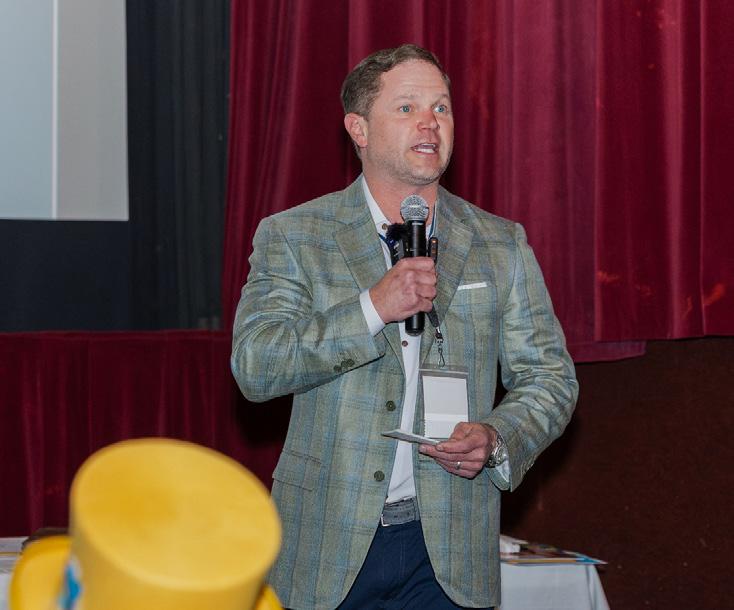


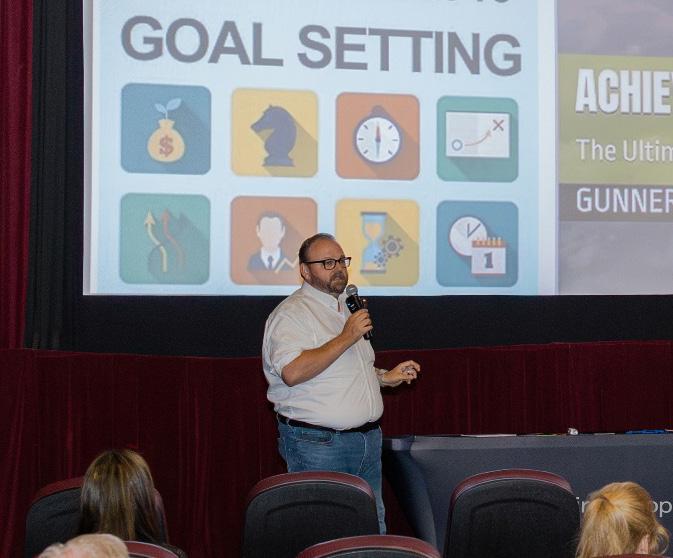



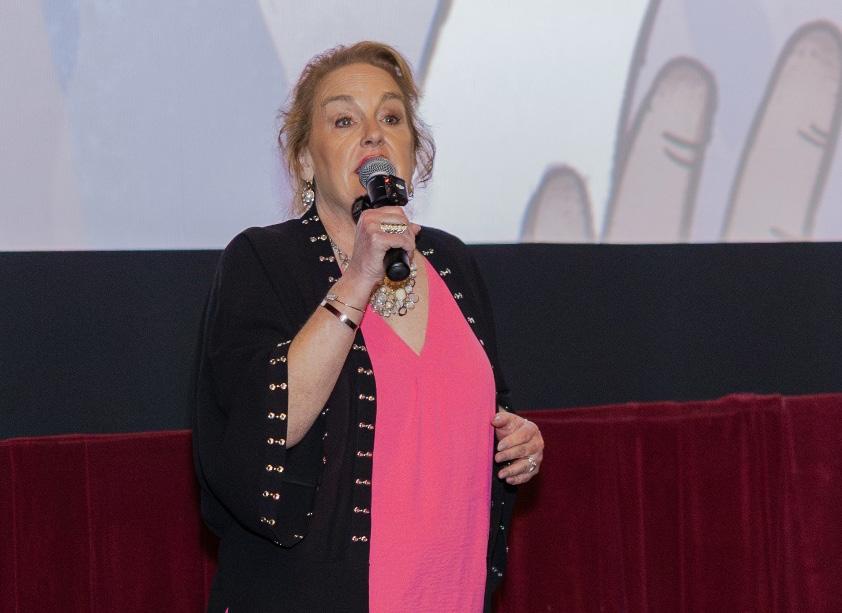


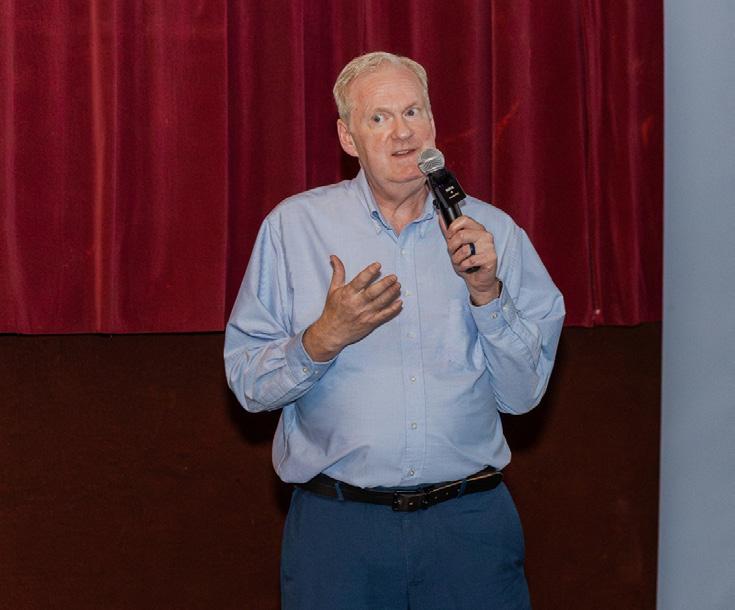
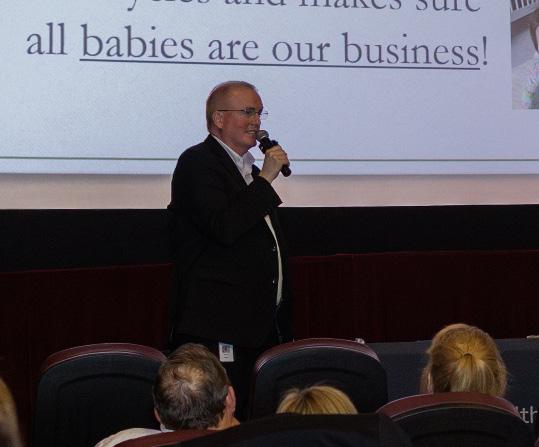



















ORLANDO, FL JUNE 16 – 19, 2026


Registration is now open for SHRM26


This isn’t just another HR conference — it’s the HR event of the year.


The biggest minds.

The boldest ideas.

The epicenter of HR.







Secure your seat at shrm.org/shrm26-

Secure your seat at shrm.org/shrm26-register
